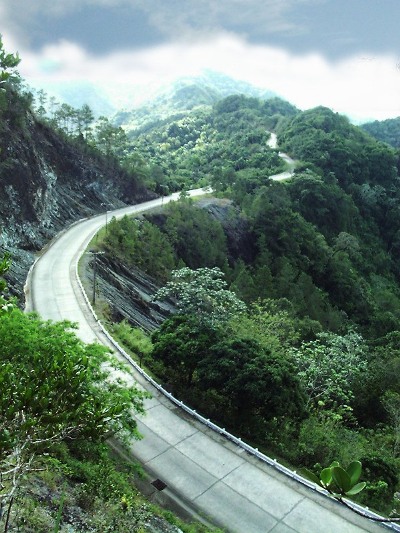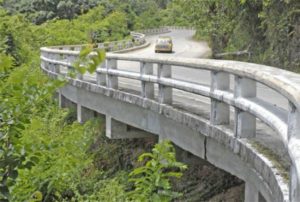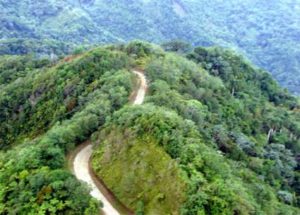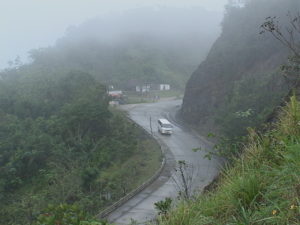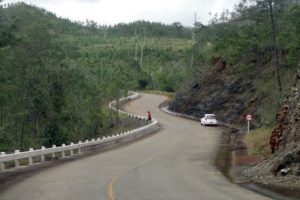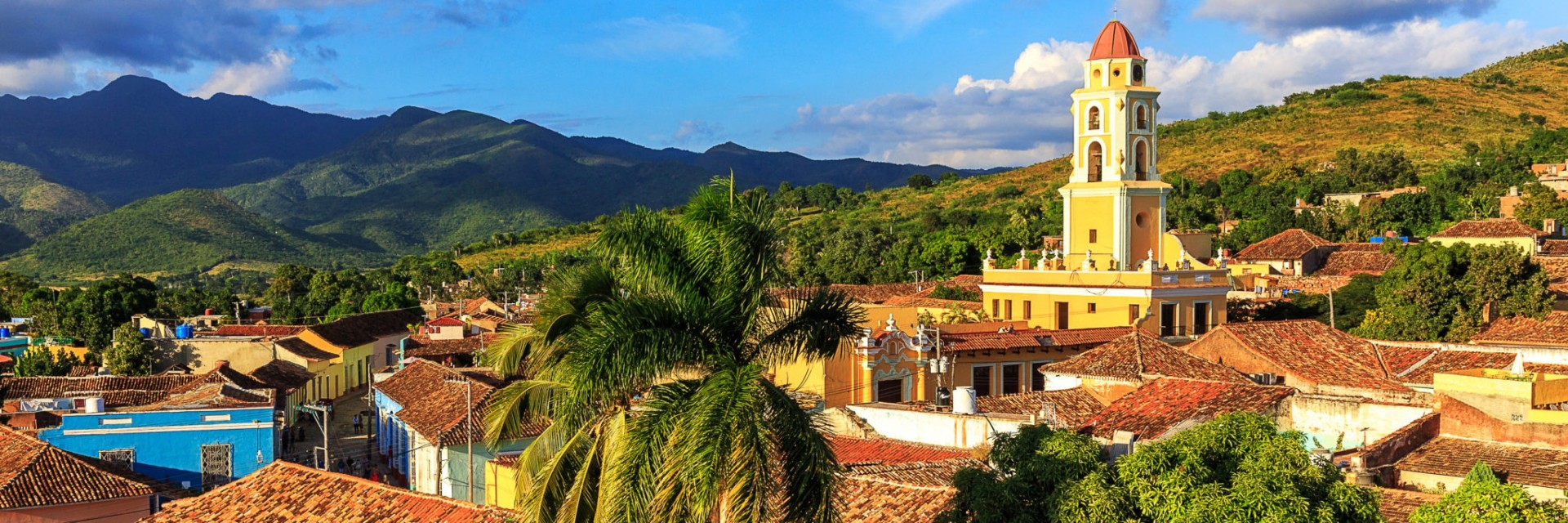 VIADUCTO LA FAROLA, UNA DE LAS SIETE MARAVILLAS DE LA INGIENERIA CIVIL CUBANA.
VIADUCTO LA FAROLA, UNA DE LAS SIETE MARAVILLAS DE LA INGIENERIA CIVIL CUBANA.
La que es considerada una de las siete maravillas de la Ingieneria Civil Cubana esta en la provincia de Oriente, en Guantanamo y es El Viaducto de La Farola, una obra humana relevante dentro de el resto de las otras obras realizadas por la Republica en todo el pais.
Con su inauguración en 1965 tras 20 meses de trabajo, la impresionante obra unió por vía terrestre la ciudad de Guantánamo con Baracoa, primera villa fundada en Cuba.
A principio de 1960 se comenzaron las obras que puso fin al histórico aislamiento de Baracoa -sueño atesorado desde 1840 por sus habitantes- y dio paso al transporte y la comunicación entre los territorio del nororiente de la isla.
Antes de 1960, el sitio solo llegó a ser un angosto paso desde Cajobabo, en el sur de la provincia, en el territorio que ocupa hoy el municipio de Imías, hasta Baracoa, en la costa norte.
La Farola atraviesa de sur a norte el macizo montañoso Sagua-Baracoa, que impuso formidables retos a la imaginación y la técnica, viaducto que solo reconoce similares en las carreteras Berno-Zurich, de Suiza, y Roma-Nápoles, en Italia.
Nuevos conceptos constructivos se emplearon para edificar esta obra de seis metros de ancho, debido a las irregularidades del terreno y las alturas que llegan a alcanzar hasta 450 metros sobre el nivel del mar.
Donde el terraplén no alcanzaba tal medida, en vez del tradicional corte de la loma, se levantó el viaducto sobre el precipicio con vigas y pilotes de hormigón prefabricados, elementos por primera vez utilizados en Cuba en una obra ingenieril de tal magnitud.
Las vigas de hormigón armado sostienen la estructura que resiste estoicamente el paso de los años y continúa brindando sus servicios en función de la transportación de los visitantes locales y extranjeros.
El procedimiento era obligado por la presencia de rocas serpentínicas, cuyas masas en ocasiones alcanzaban hasta los 200 metros sobre el nivel de la carretera, lo que hacía imposible utilizar los barrenos de dinamita pues hubieran debilitado el terreno y provocado deslizamientos.
La Farola, patrimonio nacional, deviene vía por la cual se asciende hasta la Ciudad Primada de Cuba: Nuestra señora de la Asunción de Baracoa, fundada en 1511, también conocida como la Ciudad Paisaje, por su exuberante vegetación, los bosques vírgenes de gran biodiversidad, la polymita, el molusco más hermoso del mundo y otras especies de alto endemismo.
Son espectaculares las vistas que se aprecian desde La Farola, al hacer el recorrido de Guantánamo a Baracoa, por la variabilidad de su paisaje. La espesa vegetación puede cambiar a una vista marina o desértica, en dependencia del área específica por la cual atraviese, lo cual constituye una experiencia insólita que mantiene al viajero en expectación constante.
En ese escenario montañoso que atrapa, no faltan los bellos helechos arborescentes, en medio de la densa vegetación y abundantes manantiales que propician un ambiente refrescante.
En esta región del alto oriente cubano se destacan, además de la imponente construcción, sus legendarios ríos, la conservación de sus tradiciones y bailes autóctonos, como muestra de cubanía en ese territorio.
En febrero de 1997, la Sociedad de Ingeniería Civil de la Unión Nacional de Arquitectos e Ingenieros de la Construcción de Cuba incluyó al viaducto La Farola una de las siete Maravillas de la Ingeniería Civil Cubana.
Las restantes son la Carretera Central; el puente Bacunayagua, en Matanzas; el túnel y el sifón del alcantarillado bajo la Bahía de La Habana, el acueducto de Albear y el edificio Focsa; los cuatro últimos en la capital del país, obras realizadas durante los casi 60 años que transcurrieron desde que Cuba se convirtió en La Republica de Cuba a principios del 1900.
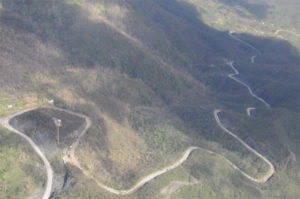 VIADUCTO LA FAROLA, ONE OF THE SEVEN WONDERS OF CUBAN CIVIL ENGINEERING.
VIADUCTO LA FAROLA, ONE OF THE SEVEN WONDERS OF CUBAN CIVIL ENGINEERING.
What is considered one of the seven wonders of the Cuban Civil Engineering is in the province of Oriente, in Guantanamo and is The Farola Viaduct, a relevant human work within the rest of the other works carried out by the Republic throughout the country.
With its inauguration in 1965 after 20 months of work, the impressive work united the city of Guantanamo by land with Baracoa, the first town founded in Cuba.
At the beginning of 1960, the works began that ended the historical isolation of Baracoa – a dream treasured since 1840 by its inhabitants – and gave way to transport and communication between the northeastern territory of the island.
Before 1960, the site only became a narrow passage from Cajobabo, in the south of the province, in the territory that today occupies the municipality of Imías, to Baracoa, on the north coast.
The Lamppost crosses the mountain range Sagua-Baracoa from south to north, which imposed formidable challenges to imagination and technique, a viaduct that only recognizes similar roads on Berno-Zurich in Switzerland and Rome-Naples in Italy.
New construction concepts were used to build this six-meter-wide work, due to the irregularities of the land and the heights that reach up to 450 meters above sea level.
Where the embankment did not reach such a measure, instead of the traditional cut of the hill, the viaduct was lifted over the precipice with prefabricated concrete beams and piles, elements first used in Cuba in an engineering work of such magnitude.
Reinforced concrete beams support the structure that stoically resists the passing of the years and continues to provide its services based on the transportation of local and foreign visitors.
The procedure was forced by the presence of serpentine rocks, whose masses sometimes reached up to 200 meters above the level of the road, which made it impossible to use dynamite holes because they had weakened the ground and caused landslides.
La Farola, national heritage, becomes a route through which you ascend to the Primada City of Cuba: Our Lady of the Assumption of Baracoa, founded in 1511, also known as the Landscape City, for its lush vegetation, virgin forests of great biodiversity , polymita, the most beautiful mollusk in the world and other species of high endemism.
The views that are appreciated from La Farola are spectacular when traveling from Guantanamo to Baracoa, due to the variability of its landscape. The thick vegetation can change to a marine or desert view, depending on the specific area through which it crosses, which constitutes an unusual experience that keeps the traveler in constant expectation.
In this mountainous setting that catches, the beautiful tree ferns are not lacking, in the middle of the dense vegetation and abundant springs that provide a refreshing environment.
In this region of the Cuban high east, in addition to the imposing construction, its legendary rivers, the conservation of its traditions and native dances stand out, as a sign of Cubanness in that territory.
In February 1997, the Civil Engineering Society of the National Union of Architects and Construction Engineers of Cuba included the La Farola viaduct one of the seven Wonders of Cuban Civil Engineering.
The remaining are the Central Highway; the Bacunayagua bridge, in Matanzas; the tunnel and the sewer siphon under the Bay of Havana, the Albear aqueduct and the Focsa building; the last four in the capital of the country, works carried out during the almost 60 years that have elapsed since Cuba became the Republic of Cuba in the early 1900s.
Agencies/ RHC/ Guadalupe Yaujar/ Lorena Viñas/ Internet Photos/ Extractos/ Excerpts/ Arnoldo Varona/ www.TheCubanHistory.com
THE CUBAN HISTORY, HOLLYWOOD.



 < VIADUCTO LA FAROLA, One of the Seven Wonders of Cuban Civil Engineering.
< VIADUCTO LA FAROLA, One of the Seven Wonders of Cuban Civil Engineering.